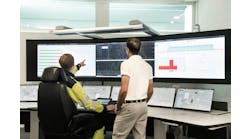“A lot of people piloting this technology are getting stuck.” ARC Advisory Group’s Peter Reynolds noted that, despite realizing the potential of artificial intelligence and machine learning, progress has been spotty in industrial circles.
In looking ahead to the future of digital transformation, Peter Reynolds first looked backwards, way back to 1968’s “2001: A Space Odyssey,” in which Stanley Kubrick, via HAL 9000, provided a shockingly prescient look at the modern state of predictive analytics and artificial intelligence (AI).
Kudos to Kubrick, and thanks to Reynolds, process industries analyst with ARC Advisory Group, who cinematically framed his presentation at this week’s Yokogawa Users Conference in Orlando as “Why Do Operations Need a Digital Transformation?”
So, Peter, why?
The answers he provided were comprehensive. Digital transformation enables operational and process optimization. It is the systematic convergence between process optimization and static asset/equipment reliability. It empowers process experts with information about what happened, what is happening and what will occur in the future.
This crowd of professionals didn’t necessarily need an explanation of the why propelling the fourth industrial revolution. Many in this audience are knee-deep in it—they’re the digital revolutionaries on the front lines. But Reynolds quickly moved beyond that setup and dug into more granular topics such as the myriad applications of industrial data, strategies for making insights actionable within/outside one’s organization, and how semantic search (think Googling something) can be applied to searching information within your network.
He noted the spectrum of digital-transformation analytics, addressing process variability, product quality, asset health, incident prediction and cognitive learning. He stressed that, amid this latest industrial revolution, we must think differently about industrial outcomes, considering new asset-services models for both static assets and rotating equipment. Remote monitoring is no longer sufficient, he claimed, noting that prescriptive efforts will become the new norm. Real-time responsiveness will birth new production techniques. New learning strategies will emerge, alongside a new generation of workers with new skills and new expectations of workplaces.
“The transition to have your company ready to use AI and predictive maintenance is not going to be easy,” he warned. “A lot of people piloting this technology are getting stuck.”
I’m sorry, early adopter, I’m afraid you can’t do that.
Preparedness varies widely
The presenter noted the common chasm that exists between enterprises’ ambition and their ability when it comes to digitalization efforts, citing ARC research finding that some 85% of process manufacturers list advanced analytics, machine learning, AI and remote services as high priorities, but only as few as 5% are actually ready for digital transformation.
Key steps toward rectifying this disconnect, said Reynolds, include changing the industrial architecture within businesses, properly leveraging data (developing actual insights rather than mere mountains of information), and realizing the full benefits of machine learning.
Another technique? Understanding and implementing the full spectrum of decision-support tools, including performance tools to identify known problems and enable reactive decisions in real time, and predictive/prescriptive tools to identify unknown problems and inform (or actually make) decisions and dictate future strategic approaches
Like many of the other presenters this week at the Yokogawa Users Conference, Reynolds noted that people—the workforce, the executives, the plant managers, the larger culture within an enterprise—are the critical component in all of this. We are the ones asking those questions about why we need a digital transformation. We are the ones tasked with making the choices about strategy and implementation. We are the ones hopping the hurdles and, ideally, reaping the rewards.
“Digital transformation is the transformation of industrial products, operations, value chains and aftermarket services that are enabled through the augmentation of people and knowledge,” as this presenter defined it.
At this stage in the game, “Why do we need a digital transformation?” is beyond hypothetical. The answers, as Reynolds presented today, are evident. The rationale is clear. The tools and techniques are at the ready.
The better question might be “When do we take the next step?”




